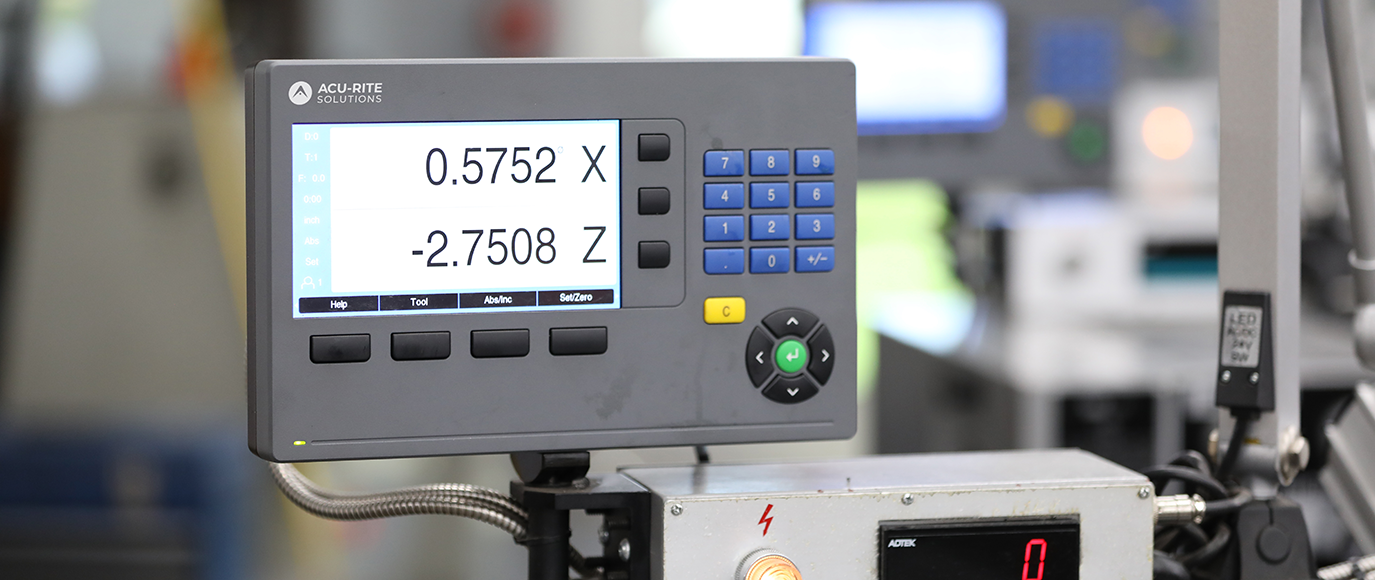
A digital readout (DRO) can bring a lot to a machine shop. Just to name two of the biggest perks, they make life easier on operators and boost the efficiency of a variety of machine tools. DROs are popular upgrades for knee mills, vertical boring mills, horizontal/vertical mills, horizontal/vertical lathes, surface grinders and EDMs. To help get you started on the right foot, we’ve collected some of our top tips for selecting, installing and using DROs.
Turn to video for help
YouTube and Vimeo offer a wealth of knowledge on different readouts, scales and machines. You’ll find troubleshooting and quick how-tos. Don’t forget about your supplier as a resource, either. We offer a variety of instructional videos for our DROs on everything from updating software to reversing direction.
Accuracy, repeatability, and resolution
Knowing the subtle distinction between accuracy, repeatability and resolution will help ensure you get a DRO that can perform the tasks you need. Put simply, accuracy is how close a measurement is to the true value, repeatability is how well a system repeats an outcome and resolution is the smallest increment a system can display.
Incremental vs. absolute positioning
Most new DROs offer the option, or different modes, to choose between incremental and absolute positioning. Then again, you may not need one or the other. Incremental (point-to-point) positioning is done from a displayed preset dimension to zero, or from zero to the dimension, then the display is reset to zero. Absolute positioning provides a unique location or reading at all times. Another perk of absolute positioning is that it allows rapid recovery of position once power has been restored to the system after shutdown or accidental loss of power.
Measure carefully
A common error when selecting scales to pair with a DRO is measuring the machine’s travels wrong. Remember, table size and travel are not the same. Travel lengths should account for things like the dovetail, knee, stops and any extra clearance needed for the reader head to avoid collisions. Always measure hard stop to hard stop.
Have tools handy
Keep in mind, that mounting equipment can be generic. You may need to modify them to fit your machine—face them off, square them up or even make your own. Have tools like a hammer, drill, screwdriver or Allen wrenches gathered for DRO installation.
The easiest way to install a DRO on a machine tool is not to modify bracketry yourselves, but to use custom mounting brackets. We offer kits with custom brackets for nearly every machine in the marketplace, saving significant installation time and hassle.
Align carefully
Do everything you can to avoid chips entering the scale or readout housings. Consider facing any openings or seals away from the cutting area, sources of chips, oil or spray.
Don’t forget about cords
Each machine is a little different, so pay close attention to where cords can attach or gather. Note any table locks, oil sources, switches or power sources can impact access or movement.
Use readouts for inspection too
The most popular digital readout in the machine tool marketplace now has Quadra-Chek onboard. Designed for use with optical comparators and measuring microscopes, “The Q” can efficiently measure 2-D features and export that data over a USB-C connection.
You’re well on your way to making your machine/s and team more efficient. If you’re looking for a little more guidance on which Acu-Rite Solutions DRO might be right for your operation, be sure to use our quick online DRO Selector Tool.